Fixed assets are means of labor that repeatedly participate in manufacturing process, while maintaining their natural form, gradually wearing out, they transfer their value in parts to newly created products. These include funds with a service life of more than one year and a cost of more than 100 minimum monthly wages. Fixed assets are divided into production and non-productive production assets.
Production assets are involved in the process of manufacturing products or providing services (machines, machines, devices, transmission devices, etc.).
Non-productive fixed assets do not participate in the process of creating products (residential buildings, kindergartens, clubs, stadiums, clinics, sanatoriums, etc.).
The following groups and subgroups of fixed production assets are distinguished:
- 1. Buildings (architectural and construction objects industrial purpose: workshop buildings, warehouses, production laboratories, etc.).
- 2. Structures (engineering and construction facilities that create conditions for the implementation of the production process: tunnels, flyovers, car roads, chimneys on a separate foundation, etc.).
- 3. Transmission devices (devices for the transmission of electricity, liquid and gaseous substances: electrical networks, heating networks, gas networks, transmissions, etc.).
- 4. Machinery and equipment (power machines and equipment, working machines and equipment, measuring and control instruments and devices, Computer Engineering, automatic machines, other machines and equipment, etc.).
- 5. Vehicles (diesel locomotives, wagons, cars, motorcycles, carts, carts, etc., except for conveyors and conveyors included in the production equipment).
- 6. Tools (cutting, impact, pressing, sealing, as well as various devices for fastening, mounting, etc.), except for special tools and special equipment.
- 7. Production equipment and accessories (items to facilitate the performance of production operations: work tables, workbenches, fences, fans, containers, racks, etc.).
- 8. Household inventory (office and economic support: tables, cabinets, hangers, typewriters, safes, duplicators, etc.).
- 9. .Other fixed assets. This group includes library collections, museum valuables, etc.
The share (in percent) of various groups of fixed assets in total cost them at the enterprise represents the structure of fixed assets. At engineering enterprises in the structure of fixed assets, the largest specific gravity occupy: machinery and equipment - an average of about 50%; buildings about 37%.
Depending on the degree of direct impact on the objects of labor and production capacity enterprises basic production assets are divided into active and passive. The active part of fixed assets includes machinery and equipment, vehicles, instruments. The passive part of fixed assets includes all other groups of fixed assets. They create conditions for the normal operation of the enterprise.
Table 1 - Structure of the OPF
|
Fund groups |
Cost, thousand rubles |
Specific weight, % |
|
Structures |
||
|
Transfer devices |
||
|
Power machines and equipment |
||
|
Working machines and equipment |
||
|
Measuring and control devices |
||
|
Vehicles |
||
|
Production and household inventory |
||
|
Other BTFs |
||
|
including active part of the OPF |
||
|
passive part of the OPF |
According to the table, we can conclude that the largest share in the structure of fixed assets of the enterprise is occupied by working machines and equipment - 52.99%, buildings - 28.52%. The active part of fixed production assets prevails - 58.32%. The smallest share (0%) in the structure is occupied by production and household inventory.
A selection of the most important documents on request Active part of fixed assets(legal acts, forms, articles, expert advice and much more).
Arbitrage practice
As the court pointed out, recognizing the position of the taxpayer as unfounded, according to the Regulation on accounting"Accounting for fixed assets" PBU 6/01 (approved by Order of the Ministry of Finance of the Russian Federation of 30.03.2001 N 26n) and Methodological guidelines for accounting of fixed assets (approved by Order of the Ministry of Finance of the Russian Federation of 13.10.2003 N 91n) organizations can apply an acceleration factor equal to 3, only for movable property or property constituting an object of financial lease (leasing), attributable to the active part of fixed assets in accordance with the terms of the leasing agreement.
Articles, comments, answers to questions: Active part of fixed assets
Open a document in your ConsultantPlus system:
Paragraph 54 of Guidelines N 91n also states that in the case of the reducing balance method for movable property constituting the object of financial leasing and attributable to the active part of fixed assets, an acceleration factor can be applied in accordance with the terms of the financial lease agreement not higher than 3.
Open a document in your ConsultantPlus system:
This article changes the essence of one of the most important tasks related to legal regulation taxation of property of organizations in our country. This refers to the task that was proclaimed a long time ago - this is the removal from taxation of the active part of fixed assets for organizations (ie, machinery, equipment, vehicles, etc.). It can be noted with confidence that today the issues related to the implementation of this task are extremely relevant: the fact is that, as O.A. Nogin, one of the main directions of the recent tax reform was proclaimed a change in the system of taxation of real estate of organizations and individuals. At the same time, it should be noted that the most important question whether movable property will be further taxed on the property of organizations is still essentially open. As an example, we can cite the Main Directions of Tax Policy for 2016 and the planning period of 2017 and 2018. . According to this document, the Ministry of Finance of Russia does not approve, but only admits that in the future the object of the tax specified in this paragraph will include only real estate.
Regulations: Active part of fixed assets
b) with the reducing balance method - based on the residual value (original cost or current (replacement) cost (in the event of a revaluation) minus the accrued depreciation) of the fixed asset at the beginning of the reporting year, the depreciation rate calculated based on the useful life of this object . However, in accordance with the law Russian Federation small businesses can apply an acceleration factor of two; and for movable property constituting the object of financial leasing and attributable to the active part of fixed assets, an acceleration coefficient may be applied in accordance with the terms of the financial lease agreement not higher than 3.
When choosing a reducing balance method, it must be borne in mind that it is most applicable to the active part of fixed assets, with an acceleration factor of no more than 2 in accordance with the law, and no more than 3 for leased property. In addition, due to the non-linear decrease in the residual value of an item of fixed assets, it becomes necessary to write off the balance of its value (the so-called liquidation value) in the last year of using the item, which can significantly exceed depreciation charges for previous years. This will inevitably have a negative impact on the final financial results activities, because in the last year of using the object, the return on production is the smallest, hence the cost of production will be overestimated.
Fixed assets are material assets used as means of labor that operate in an unchanged natural form for a long time (more than one operating cycle). Depending on the nature of participation in the process of expanded reproduction, fixed assets are divided into production and non-production. Production fixed assets include objects, the use of which is aimed at systematic profit making as the main purpose of the activity. They are replenished through capital investments. For industrial enterprise production fixed assets include machine tools, workshop buildings, structures, administrative buildings and other fixed assets with which products are manufactured. Distinctive features fixed production assets:
reused in the production process;
retain their natural shape appearance During a long time;
transfer their value to finished products piecemeal as it wears out.
Non-productive fixed assets are durable items that serve the manufacturing plant non-productive consumption. These funds are not directly involved in the production process, but are used for the cultural and everyday needs of the company's employees. These include fixed assets of canteens, polyclinics, kindergartens, etc., which are on the balance sheet of the enterprise. The value of these funds disappears in consumption. These funds are reproduced at the enterprise at the expense of profit. From the point of view of accounting, fixed assets are means of labor with a service life of more than one year and (or) more than one operating cycle. The fixed assets of the enterprise are diverse in composition and purpose.
Classification of fixed assets by types:
Land plots and nature management objects.
Structures.
Cars and equipment:
a) power machines and equipment;
b) working machines and equipment;
c) measuring and control instruments and laboratory equipment;
d) computer technology;
e) other machinery and equipment.
Vehicles.
Production and household inventory.
Working cattle.
Productive livestock.
Perennial plantations.
Other types of fixed assets.
Fixed assets are valued in kind and value terms. In-kind indicators of fixed assets reflect the characteristics and number of individual objects. For example, for equipment, this is the number of units by type, age. Information on each unit of fixed assets is reflected in the inventory cards. The structure of fixed assets is characterized by the ratio specific gravity the value of each group of fixed assets. The production structure of fixed production assets is understood as the ratio of various groups of funds in terms of material-natural composition in their total average annual value. In the composition of the main production assets (OPF), an active and a passive part are distinguished.
Active funds directly affect the objects of labor. For example, working machines and equipment, tools, measuring and control instruments and equipment, computers, industrial vehicles. The share of the active part is the most important indicator of the production structure of fixed assets of the enterprise.
Depreciation of fixed assets.
In the process of production, the main production assets wear out and deteriorate. This reduces their value. Depreciation is a cost indicator of the loss of fixed assets physical qualities or loss of technical and economic properties, and as a result of this cost. Depreciation is divided into physical and moral. Physical (material) depreciation is the loss of its consumer value by fixed assets either due to their operation (for example, wear of parts) or under the influence of natural forces (for example, metal corrosion). The higher the equipment load and the shift ratio, the higher the degree of physical wear. The coefficient of physical depreciation of fixed assets (Ki) is calculated by the formula
where Tn is the standard service life, years;
Tf is the actual period, years.
The normative service life of an object is the duration of its operation in years, established taking into account moral and physical depreciation, under the conditions of the planned level of use of the object, production and renewal of output. The coefficient of physical depreciation can be calculated as the ratio of the amount of depreciation of fixed assets to their full replacement cost. The most correct method for assessing the degree of physical wear and tear is an examination of the state of the object in kind. The shelf life coefficient (Kg) of fixed assets is calculated by the formula:
Kg \u003d 1 - Ki
The moral depreciation of fixed assets is expressed in a decrease in value, regardless of physical depreciation. Distinguish obsolescence of the first and second kind. Obsolescence of the first kind is associated with the loss of fixed assets of their original value as a result of an increase in labor productivity in the industries that produce them. Elements of fixed assets of the same design and with the same characteristics are produced at a lower cost and at a lower price. Obsolescence of the second kind is associated with the emergence of new, more progressive and economical technology as a result of scientific and technological progress, which leads to a decrease in the relative utility of old fixed assets. Obsolescence of the first kind does not lead to losses, and of the second kind - leads to losses, since the costs of producing similar products on obsolete equipment are higher than on new ones. Obsolescence of the second kind can be considered as partial (partial loss of value) and complete (when the further use of the machine becomes unprofitable). In monetary terms, depreciation of fixed assets can be defined as the amount of depreciation accrued over the entire actual life of fixed assets. Therefore, it is possible to determine the depreciation of fixed assets in monetary terms by the formula.
Passive part of fixed assets- fixed assets that provide conditions for production (buildings and structures).
clarification
From an economic point of view, fixed assets are divided into (or the Active part of fixed assets) and the Passive part of fixed assets (or the Passive part of fixed assets).
The active part of fixed assets includes fixed assets that are directly involved in production ( machines, equipment, vehicles, devices).
The passive part of fixed assets includes fixed assets that provide conditions for production ( buildings and constructions).
Example
In the building of the factory workshop there are machines on which products are manufactured.
Workshop building - passive fixed assets;
Machine tools are active fixed assets.
Such a division has legal significance at the present time. AT normative documents these concepts do not occur. But in economic analysis terms are used.
In legislation, the term can be found in obsolete and repealed documents. For example, in Guidelines on accounting of fixed assets, approved by the Order of the Ministry of Finance of the Russian Federation of October 13, 2003 N 91n (p. 54):
"... with the reducing balance method - based on the residual value (original cost or current (replacement) cost (in the event of a revaluation) minus the accrued depreciation) of the fixed asset at the beginning of the reporting year, the depreciation rate calculated based on the useful life At the same time, in accordance with the legislation of the Russian Federation, small businesses can apply an acceleration factor equal to two; to the active part of fixed assets, an acceleration factor of no more than 3 may be applied in accordance with the terms of the finance lease.
Additionally
Fixed assets that are directly involved in production (machinery, equipment, vehicles, appliances).
Reporting of the organization, which is prepared according to the rules of accounting.
Durable means of labor (over 12 months). Fixed assets include buildings, machinery and equipment, structures and transmission devices, vehicles.
An economic indicator that characterizes the efficiency of the use of fixed assets by an enterprise (in the industry). It characterizes the cost of fixed assets attributable to 1 ruble of sales proceeds.
An economic indicator that characterizes the efficiency of the use of fixed assets by an enterprise (in the industry). Shows the extent to which the cost of fixed assets is covered by sales proceeds.
- active part - is directly involved in the production process and directly affects the amount of output.
- passive part - has an indirect impact on the production of products and indirectly affects the value of output.
The ratio of the active and passive parts of the OS characterizes the level of technical equipment of the enterprise. The larger the active part in the composition of the OS, the more products, all other things being equal, are produced per 1 unit. OS.
OS structure:
Production structure OPF at the enterprise depends on the following factors: the specifics of the enterprise; acceleration of scientific and technical progress; geographic location, etc.
Technological the structure of the OPF characterizes their distribution among the structural divisions of the enterprise as a percentage of their total value. In a "narrow" plan, the technological structure can be represented, for example, as the share of integral types of machine tools in the total number of machine tools.
Age the structure of the BPF characterizes their distribution by age groups (up to 5 years; from 5 to 10 years; from 10 to 15 years; from 15 to 20 years; over 20 years).
31. Assessment of the organization's fixed capital: the concept of initial, residual, liquidation, replacement, average annual cost.
Initial cost - this is the cost at which funds are accepted to the BU and put on the balance sheet (Balance Value). To accept fixed assets for accounting, it is necessary to correctly determine their initial cost, i.e. all monetary costs for their creation, acquisition and commissioning.
Recovery - cost during the reproduction period, taking into account obsolescence and revaluation. (The cost of OS objects in modern conditions / in today's prices).
residual value - represents the initial (recovery) minus the accrued depreciation.
Liquidation value - the cost of selling worn-out or decommissioned individual fixed assets.
Average annual cost - OS cost at the end of the year.
32. The concept and types of depreciation of fixed assets, factors affecting the degree of depreciation.
Wear is the gradual loss of value of capital goods.
Depreciation of fixed assets (funds)- decrease original cost of fixed assets as a result of their wear during the production process ( physical deterioration) or as a result of the obsolescence of machines, as well as a decrease in the cost of production in the context of an increase in labor productivity.
In accounting, depreciation of fixed assets is reflected on a monthly basis simultaneously with depreciation. The amount of depreciation is equal to the amount accrued depreciation of fixed assets.
OS wear types:
Physical deterioration - the loss of the means of labor of their original qualities, not only in the process of their functioning, but also when they are inactive (there is destruction from external atmospheric influences, corrosion). To characterize the degree of wear of the OS, use:
- wear factor Ki=I/Sp, it shows how a share of the total cost has already been transferred to the cost of the GP. AND - wear cost.
- coefficient of validity Kg = (Sp-I) / Sp, shows what share of the total initial cost has not yet been transferred to the cost of the GP.
2) Obsolescence - means of labor depreciate and lose their value until they are physically worn out. As a result, operating systems become uncompetitive in terms of their technical characteristics and economic efficiency. (Consequence of NTP).
2.1) ObsolescenceIkind - there is a depreciation of equipment of the same design that was produced earlier due to the reduction in the cost of their reproduction in modern conditions.
2.2) ObsolescenceIIkind - there is a depreciation of old machines and equipment that are still physically fit for work due to the emergence of new, more technically advanced and productive ones. And m2 =(Sp old -sp new )*Etc old *T old /Etc new *T new
Etc old - performance of the old T old – period of operation of the old sp new – original cost of new.

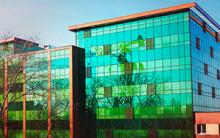

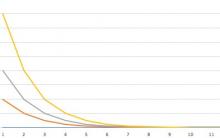
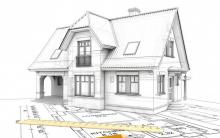
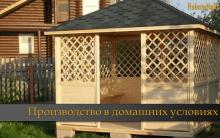
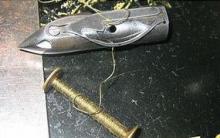




Flower party: a bouquet of positive emotions
Words of teachers in a congratulatory scene for parents
Who's Who by Relationship Her mother-in-law calls her mother-in-law mom
Your mother is my mother-in-law Riddle mother-in-law calls my mother-in-law
How to make a scene for a wedding “Three girls under the window Comic scene three girls